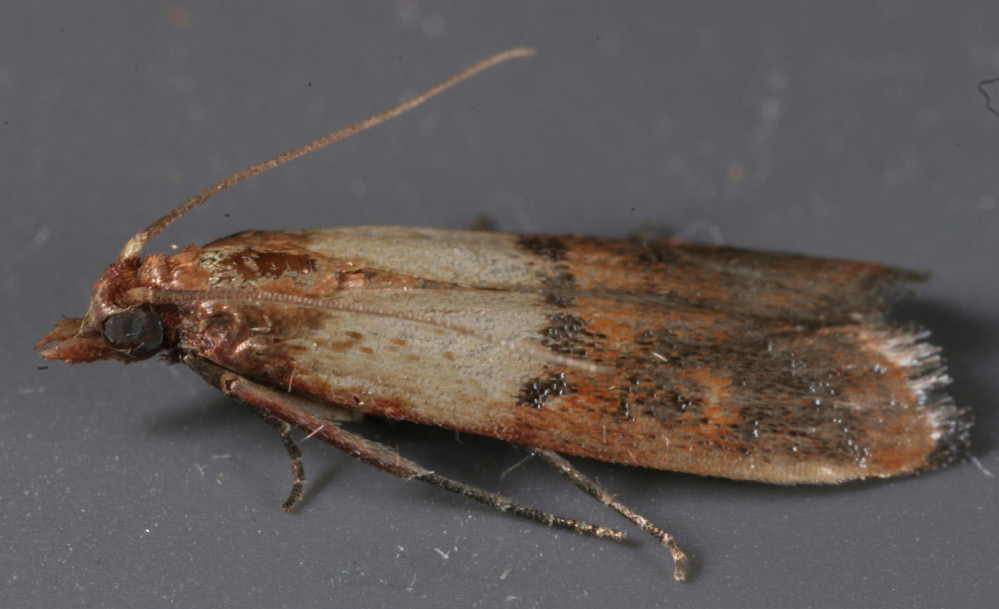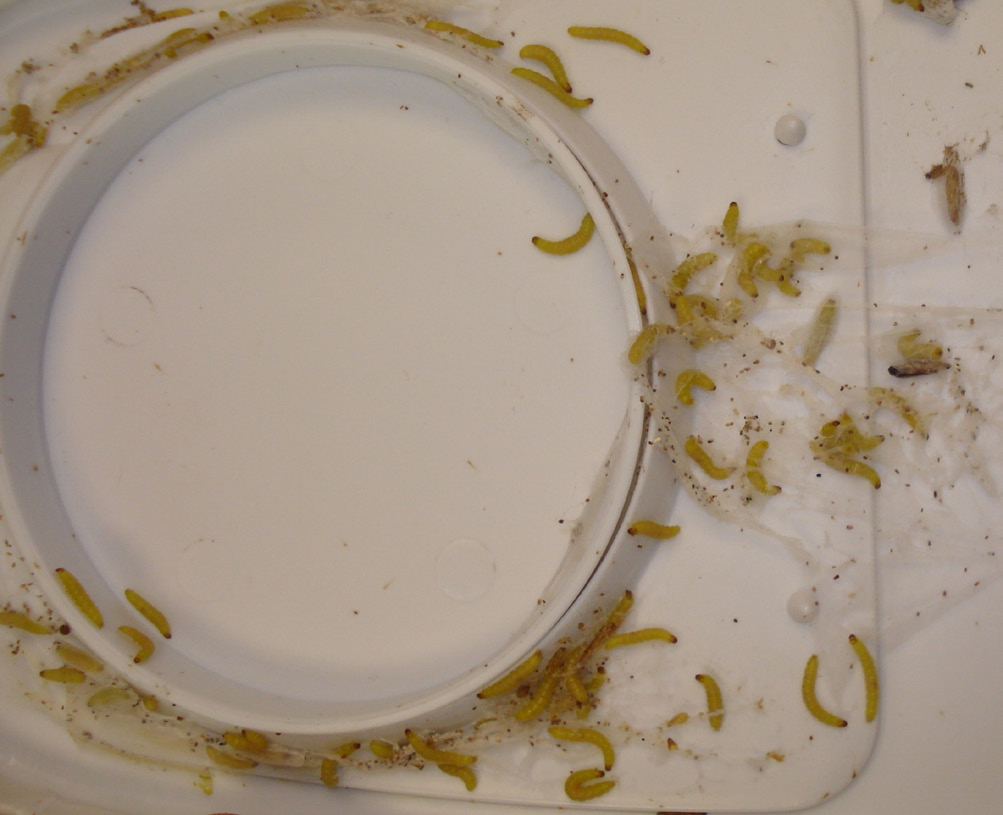Insects in the Kitchen
“Too many cooks in the kitchen spoil the soup” is a well-known proverb, and sometimes unwanted kitchen guests are the six-legged kind. They eat ingredients, spoil food, and are irritating. Read on for advice on identifying and removing some of these irksome critters.
Fruit Flies
Adult fruit flies are tiny; they are only up to 1∕8" long, brown in color, and often have bright red eyes. They lay their eggs on rotten food or ripe fruit and vegetables, which is also where the larvae feed. The larvae are tiny, pale maggots that are easily overlooked. They can take as little as 10 days to complete their life cycle indoors, so large numbers of fruit flies can quickly appear. Inside the kitchen, their food source and egg-laying sites are usually on overripe produce or food residue at the bottom of the trash can.
To manage fruit fly infestations, it is crucial to discard or refrigerate any of their potential food sources. Check for food that might have fallen beneath the furniture. Clean food residues from countertops and thoroughly clean and dry the inside of the garbage can. Homemade traps can be made by pouring an inch of apple cider vinegar mixed with a couple of drops of dish soap into a jar. Cover the top of the jar with plastic wrap and poke small holes in it with a toothpick. The flies are attracted to the odor, so they enter the jar. Then, they become trapped inside and drown.

Fruit flies on some food.
Photo credit: Pest and Diseases Image Library, Bugwood.org
LARDER BEETLES
Larder beetle adults are ¼" to 1/3" long. They have a pale band containing six black spots across their bodies. The larvae are up to ½" long, brown, and hairy with a pair of spines on the end. After molting several times, the larvae find cracks and crevices to pupate in, but may also burrow into materials such as wood, cork, or plaster. A couple of weeks later the adult beetle emerges. Both the adults and larvae feed on high-protein foods including meats, cheese, feathers, fur, dried fish, dry pet food, dead animals or insects.
To control these beetles, start by regularly vacuuming around the areas they are found. Clean and vacuum hard to reach places like under furniture, beneath kitchen appliances, and under kitchen cabinets. Try to find their primary food source and discard it. The smaller larvae are more likely to stay near their food source. Areas where you see the most larvae are best places to start. Their breeding sites are most likely in the kitchen/pantry, but other sources include dead insects in wall or ceiling voids, bird nests, behind baseboards, and dead animals in attics or crawl spaces.

Larder beetle adult
Photo credit: Joseph Berger, Bugwood.org
ANTS
Ants usually nest outdoors and enter kitchens to forage for food and water. In most cases, they enter a home through openings like cracks in walls or gaps around windows and doors. Occasionally, they also nest indoors. Most ants feed on sugary food, but some search for high protein or greasy foods. Food preferences depend on the species and individual colony feeding habits.
Discourage ants from entering by removing spilled foods and liquids and by thoroughly cleaning the kitchen. Make sure remaining food is securely sealed, fix any leaking pipes or faucets that may be a water source, and fill in gaps or holes they may be using to enter the home. If ants are seen following each other, wash the area with soapy water to remove pheromone trails that ants leave to direct others to food. Ant bait products contain insecticides and, although they can take a few weeks to work, they are effective when the ant unwittingly takes the insecticide back to the rest of the colony in the nest. Always read and follow the instructions on insecticide product labels carefully. Control of persistent ant infestations and indoor nests may require help from a pest control professional.

Field ant (Formica sp.)
Photo credit: Joseph Berger, Bugwood.org;
INDIANMEAL MOTH
Indianmeal moths are roughly 1∕3" long. While the moth is at rest, the visible wings are off-white with coppery-brown ends. The larvae are pale, with reddish-brown heads and are up to ½" in length. The larvae feed on stored foods such as grains, nuts, seeds, dried fruit, dried pet food, pasta, and spices. They leave silk on the food that accumulates fecal pellets and the molted skins of the larvae. They spin a silken cocoon to pupate in and emerge as adult moths a few weeks later.
Infested food should be discarded. Since the larvae can chew through plastic bags and cardboard, transfer any bulk food into durable plastic or glass containers with tight-fitting lids. Clean up any spilled food and check infrequently cleaned spots. Sticky traps that use pheromonescented lures can be used to monitor for the presence of adult moths after infested food has been removed.


(Left) Indianmeal moth adult, (Right) Indianmeal moth larvae on the inside lid of a container.
Photo credit: Gary Alpert, Harvard University, Bugwood.org; Mohammed El Damir, Bugwood.org
Disclaimer: These recommendations are provided only as a guide. It is always the pesticide applicator’s responsibility, by law, to read and follow all current label directions for the specific pesticide being used. Due to constantly changing labels and product registration, some of the recommendations given in this writing may no longer be legal by the time you read them. If any information in these recommendations disagrees with the label, the recommendation must be disregarded. No endorsement is intended for products mentioned. The authors and Montana State University assume no liability resulting from the use of these recommendations.
Chloe Rice is an MSU Extension Associate Specialist and Urban Arthropod Diagnostician.
